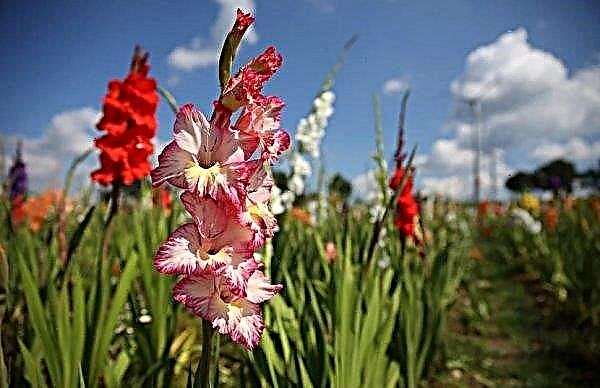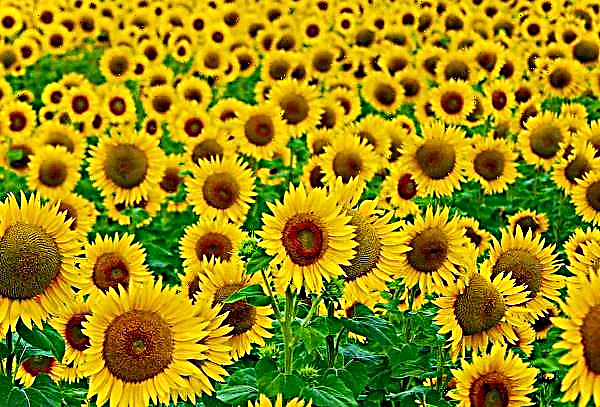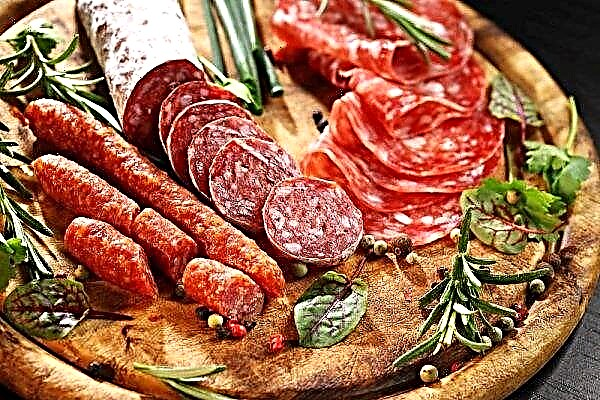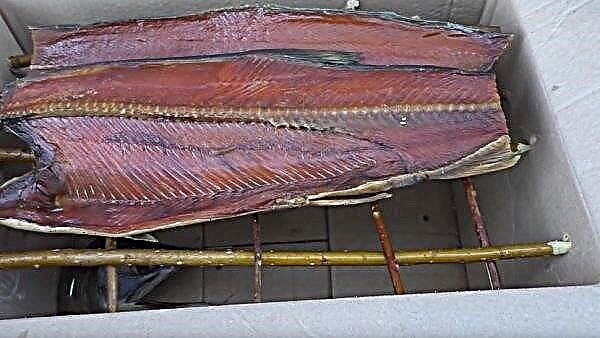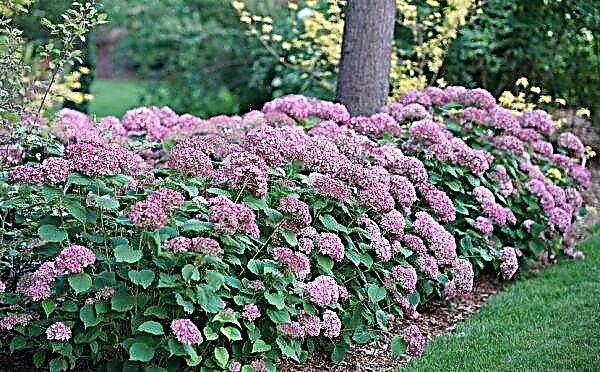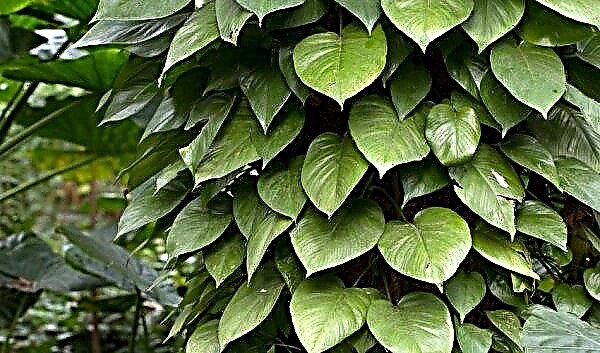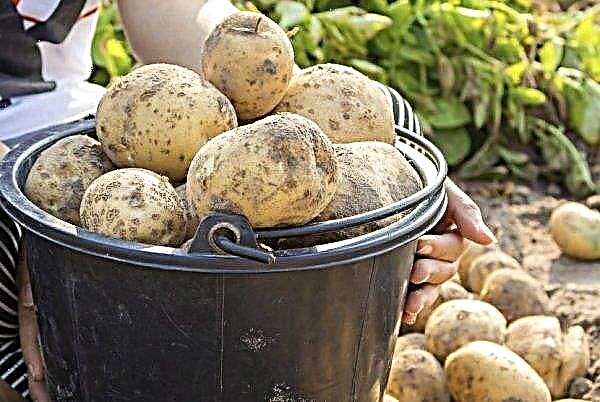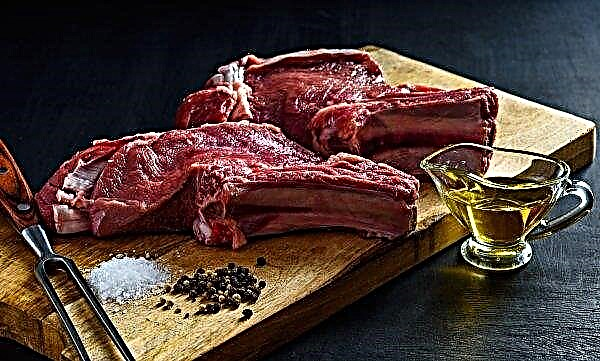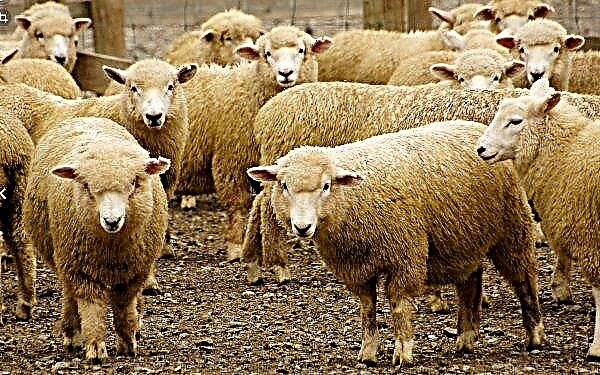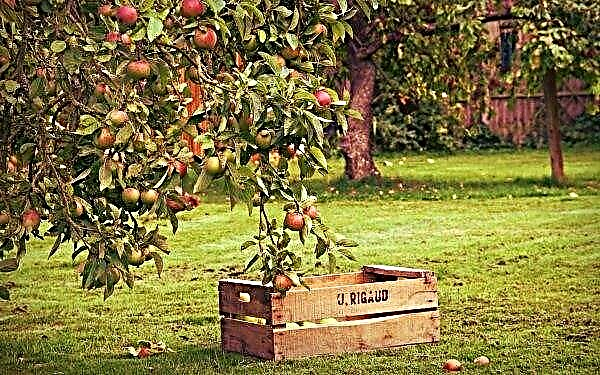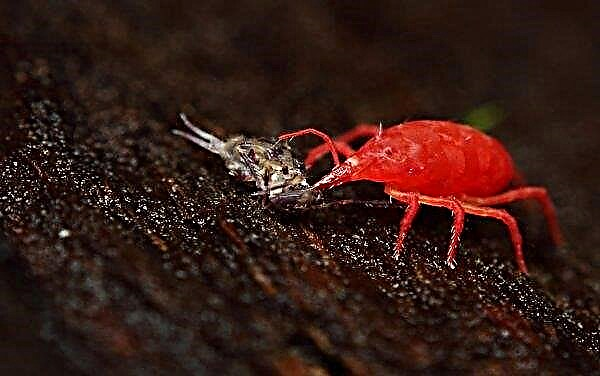Hydrangea Incredible is unpretentious, it tolerates adverse atmospheric phenomena, is characterized by an attractive appearance due to lush beautiful flowering. Advantages of the bush are appreciated by professional flower growers. What are the secrets of growing Incredible hydrangea, methods of its propagation, methods of combating diseases and pests of the bush - more on this later in the article.
Description and characteristics of the variety
The genus of flowering plants is hydrangea, includes an incredible tree-like variety - Incredible. Its Latin name is Hydrangea arborescens Incrediball. It belongs to the hydrangea family. A wild tree is widespread in North America.
Cultivated bush grows everywhere. The climatic conditions of central Russia are suitable for cultivating the Incredible variety in open ground. The bush gained fame and spread widely due to long plentiful flowering. This wonderful phenomenon lasts from mid-summer to October.

Description of perennial deciduous shrub:
- Its height is 1.0–1.5 m.
- The shape of the crown is round, with dense lignified, growing from the root to a width of 3–3.5 m and slightly pubescent leafy tubular growths.
- Leaves - on elongated and thin petioles, arranged in pairs. They are curly, ovoid (up to 20 cm). Their upper side is a bright saturated green color, the lower side is a bluish-bluish tone.
- The root system is branched, superficial.
- The flowers are snow-white, with a diameter of about 2 cm. They form a large inflorescence in the form of a shield. It resembles a beautiful ball with a diameter of 30-40 cm. Fruit flowers are in the middle of the head, sterile - at the edges. The hue of the petals changes during the warm season: first it is yellowish-greenish, then milky-white, after a while it becomes an unusual lemon.
- Numerous small seeds ripen in boxed fruits.
Did you know? The value of hydrangea inflorescences — heartfelt affection and gratitude. The beauty and aroma of flowers determine their choice for wedding bouquets and compositions.
The name of the variety arose from the English word "incredible" (terrific) for the incredible appearance of the bush. Hydrangea Incredible was developed on the basis of Annabelle. The main difference is strong erect stems that do not bend to the ground even during heavy rains and gusty winds. They hold heavy massive "balls", the number of flowers in which is four times more than that of Annabel. Therefore, the bush is often called Strong Annabelle.

Variety Incredibol resistant to low temperatures: it remains viable even at -30 ... -34 ° C. The plant is able to quickly recover from damage by negative weather factors. Cuttings of the bush take root well. The shrub is characterized by rapid growth: growths during the year can grow to half a meter. The four-year-old plant becomes a luxurious flowering bush.
Use in landscape design
To create landscape compositions often use the spectacular decorative hydrangea Incredible. In spring, the bush attracts attention with a green leafy crown, and since mid-summer with large bright flowers. It has an exquisite appearance and in a group planting, forming a blooming alley with other perennials, and also as a tapeworm - the main element of the lawn.
When planting the Incredible in the flower garden, it is more appropriate to place the crop in the background so that lower flowering plants are clearly visible. The contrasting composition of snow-white Incredible inflorescences and evergreen coniferous and deciduous ornamental bushes looks great. To diversify the color scheme of the garden, you can artificially change the color of the flowers to pink or blue.
To do this, pour the soil around the bush with a solution prepared using dyes: aluminum sulfate or potassium permanganate. From high-growing, high-growing hydrangea bushes that grow rapidly in width from the root, it is easy to create a hedge. Due to the unpretentiousness of the plant, it is used both in urban squares, parks, flower beds, and in personal plots of country houses.
Landing
A decorative shrub is able to decorate a garden or yard. To do this, it must be properly planted. Mature hydrangea responds poorly to transplants. Therefore, pay special attention to the choice of the place where the bush will be planted.

Landing time
Planting the Incredible shrub is preferable to engage in spring or early fall. If the approaching early winter is predicted, then the landing is postponed to the spring months. So the seedlings will have more time to root and adapt to the cold season. If planting is carried out in the fall, then additionally cover the seedling for the cold season.
Seat selection
In the northern latitudes, it will be preferable to place a bush on the sunny side of the site, where there are no drafts. In the southern regions, it is advisable to choose a shaded place to land. The best option for a photophilous plant is to be under the blessed shade during the day. Sunlighting favorably affects the shrub in the morning and evening.

Soil preparation and seedling
Seedlings are planted in loose, nutritious, breathable, loamy, slightly acidic soil. Her pH should be 5 units. If the soil is alkaline, then before planting a young plant, it is recommended that the soil be acidified with peat, leaf compost or rotted needles.
You can use chemicals: ammonium nitrate or 1 tsp. citric acid, previously dissolved in 10 liters of water. The site should be dug up, fertilized, remove weeds. Incredible seedlings offer specialized flower retail outlets and nurseries with an open root system or in pots.
When buying a plant, inspect its appearance well:
- height should be at least 0.5 m;
- the minimum number of branches is three;
- kidneys on growths - large, elastic, not dry;
- bark of semi-lignified stems — not damaged;
- if the seedling is without a pot, then the root system must be well developed, at least 25-30 cm long, not dry, without symptoms of decay;
- when purchasing a bush in a container, specify the timing of its planting, because frequent plant movements adversely affect survival.

Potted seedlings are usually already fertilized and do not require additional fertilizing during the first year after planting. Such bushes rather take root in a new place, they can be planted in open ground throughout the entire growing season.
Landing algorithm
An acquired seedling with an open root system should be planted immediately. If this is not possible, then the plant should be moved to a dark room with an air temperature not exceeding + 3 ° C, not forgetting to constantly moisten the roots.
Before planting, the seedling is inspected, dry or elongated roots are removed. If the procedure occurs in the spring, then 3-4 kidneys of annual growths are cut off. To prevent stress in a young plant and increase the chance of its survival, it is recommended to immerse the root of the bush in a growth stimulator, for example, “Heteroauxin”, and leave it for 5–20 hours.
Important! When planting several bushes, leave a distance between them of at least 0.8–1,0 m.
Then prepare a recess for planting, the dimensions of which are proportional to the rhizome of a young plant, not less than 0.5 m in depth and width. The bottom of the pit is covered with any available drainage. Then they bring humus, sod land and sand in equal proportions. If the soil is poor, then add 50 g of superphosphate and the same amount of potassium-containing fertilizers.
Then a small hill is formed in the recess, it is moistened a little, the root of the prepared seedling is placed on top and covered with earth, ramming it so that voids do not form. The root neck is not buried: it should be at the level of the soil.
After planting, the soil around hydrangea is abundantly moistened and mulched with a layer of peat or humus 6–8 cm thick, placing it 2-3 cm further from the trunk of the shrub. It is necessary to take care that the bush takes root, for this it is protected from drafts and midday rays of the sun.
Care
A dry climate is detrimental to the plant, so it needs watering and fertilizing the soil. To achieve a lush, flowering bush, it is important to take care of it in a timely manner. The appearance of the plant and the size of the inflorescences largely depend on the correct removal of growths. Excessive shoots provoke an uneven distribution of nutrients in the bush. As a result, the number of inflorescences is reduced.
Watering and fertilizer
Hydrangea Incredibol is very fond of moisture. Therefore, it is advisable to regularly water it abundantly. On average, the irrigation rate is 30 liters of water every week under a shrub. This value can fluctuate depending on the parameters of the bush, climate, the presence of rain and mulch in the near-stem circle.
 Water should be soft, settled, warm. Water the bush in the morning and evening hours under the root.
Water should be soft, settled, warm. Water the bush in the morning and evening hours under the root.
A moisture deficit is reflected in the shrub: it fades, the inflorescences turn pale, and the foliage falls off. With a systematic lack of water from year to year, inflorescences become smaller, and the process of bush development is inhibited.
The recommendations of experienced gardeners are to prepare a weak solution of potassium permanganate for irrigation under the root. From this procedure, the shoots become durable and flexible. It is advisable to loosen the moist soil around the bush several times during the warm season to a depth of 5 cm, then cover it with a layer of mulch.
The lush flowering of the bush depends on regular fertilizers of the soil.
During the entire growing season, approximately three top dressings are carried out:
- The first is carried out in the spring, when the shrub forms shoots and quickly gains green mass. At this time, a complex mineral fertilizer containing nitrogen, potassium and phosphorus is used.
- The second is relevant when buds are formed. It consists of superphosphate or potassium sulfate.
- The next one is carried out at the end of summer. During this period, top dressings containing potassium, as well as bird droppings, compost or manure, are used.
 In the autumn period, fertilizing is not necessary, because the bush begins to prepare for the dormant period.
In the autumn period, fertilizing is not necessary, because the bush begins to prepare for the dormant period.
Pruning
To form a crown begin the next year after planting a seedling. The first pruning is carried out before the leaves appear: 3-5 buds are left on strong shoots, 2-3 on buds. At the same time, the upper ones should be facing outward. So the bush will form a magnificent crown without excessive thickening.
Important! Inkredibol hydrangea inflorescences are formed on growths that have grown in the current season.
Bushes with damaged, diseased branches are needed for sanitary pruning. Next year, such a plant must be formed again. Old shrubs need a rejuvenating pruning: they remove all branches that are located at a height of half a meter from the ground.

After this procedure, the plant will bloom in a year. In autumn, after the end of the flowering period, growths are shortened to a level of 30 cm. This technique provokes the growth of roots and prevents their freezing.
Winter preparations
The Incredible variety is resistant to low temperatures, and if damaged, it is able to recover quickly. Therefore, adult bushes there is no need to additionally cover. Only young Incredible seedlings up to four years of age need protection. To this end, mulching the soil around the plant.
Also, near the bush, you should drive in a stake, to which you need to fix the growths, and from above cover the branches with lapnik. Shelter is removed when there is no longer the threat of spring frost. It is better to carry out this procedure in cloudy weather so that the plant is not burned by the sun.
Breeding
Hydrangea Incredible is propagated using layering, cuttings and dividing shrubs. The use of seeds or vaccinations is very rarely practiced due to the length and complexity of the procedure. Cuttings take root almost wholly. Their harvesting occurs during the flowering period of the bush.

Cuttings
Vegetative propagation is the most common.
The technology of its application is as follows:
- The tops of young flexible growths up to 15 cm long or lateral shoots with a piece of the old branch are cut off at an angle of 90 °.
- The lower leaves from the shoots are gently torn off.
- Then immerse the slice in a solution with a root stimulator.
- Next, place the shoot in a container with a moist nutrient substrate, which can be prepared independently by combining sand and peat.
- Cuttings should be watered in a timely manner, provide ventilation, adequate lighting and maintaining a favorable temperature regime.
- Planting rooted shoots in a permanent place is carried out in early April.
During the first 2-3 years, young seedlings must be sheltered for the winter. Hydrangea grown from cuttings begins to bloom at the age of four.
Important! To cuttings quickly rooted, build a mini-greenhouse with a wet microclimate. To do this, close the container or plastic bottle with glass or film.
Bush division
Reproduction in this way is carried out both in spring and in autumn.
For this purpose:
- The bush should be dug up.
- Then divide it with a sharp shovel into several parts so that each of them has roots and several buds.
- Next, plant the bushes of the bush on the site to new places.

Layering
If the bush is older than 2 years, then it is possible to propagate the Incredible hydrangea using the lower shoots.
To this end:
- Layers are tilted to the ground, fixed with a metal bracket and instilled, while it is imperative to leave the tops of 15–20 cm long intact.
- Regularly water the branches to form roots in places where the shoots were covered with soil.
- In April or September, rooted cuttings are separated from the shrub and transplanted to a half-shaded place for growing.
Seed cultivation
To create a hedge, many seedlings will be required. The seed method will allow them to grow.
For this:
- In February, boxes are prepared with a loose nutrient substrate, mixing sheet, peat and river sand in a ratio of 4: 2: 1.
- Then spread the seeds and sprinkle with a thin layer of soil.
- Crop moisturize with a spray gun.
- Then cover with glass or film.
- Provide regular ventilation and hydration of the substrate as necessary so that the soil does not dry out.
- After emergence, the glass or film is removed.
- Seedlings with two leaves should be dived into the same substrate.
- Later they should be planted one by one in separate pots.
- The following spring, young plants are transplanted into the open ground.

Diseases, pests and their control
Bush Incredible is quite resistant to diseases and insect infestations.
- Factors that can trigger the occurrence of such unpleasant situations include:
- improper care;
- adverse atmospheric phenomena;
- infection from neighboring plants.
Did you know? The Japanese name for hydrangea is «Adzisai», which means “purple sunny flower”.
So, if you do not make sure that the soil on which hydrangea grows is acidic, then chlorosis can develop. The symptom of this disease is faded leaves. To prevent or correct the situation, the soil is acidified by adding iron sulfate to the soil.
To reduce the pH per unit, 55 g of substance per 1 m² is required.Soil acidity will increase after 2-3 weeks, so you can use iron before planting.

If spotting (anthracnose) or signs of powdery mildew appear on the leaves and shoots, protect the perennial with one of the fungicidal preparations: Skor, Maxim, Horus, Switch.
If spider mites or leaf aphids appear on the bush, use one of the insecticides: Fitoverm or Intavir to get rid of them. The fact is that at first parasites are not easy to spot.
To detect them, it is advisable to conduct a thorough examination of the back of the leaves. Plaque, white spots or thin cobwebs indicate the presence of parasites. Experienced flower growers use proven recipes to prepare decoctions.
Check out

Repel harmful insects with the help of aromatic plants planted nearby:
- Persian chamomile (feverfew);
- marigolds;
- lavender;
- tansy;
- peppermint;
- rosemary.
With a large number of parasites, chemical preparations are mandatory.
Hydrangea Incredible is a luxurious decorative perennial that does not require special care. It is able to grow even a novice amateur flower grower in his infield. The efforts will be rewarded with the exquisite beauty of lush airy snow-white inflorescences.

